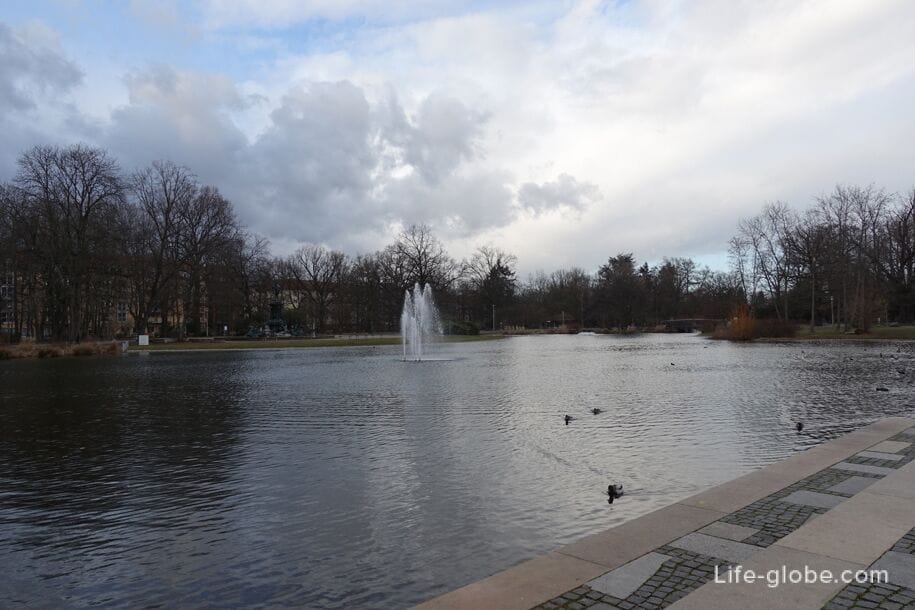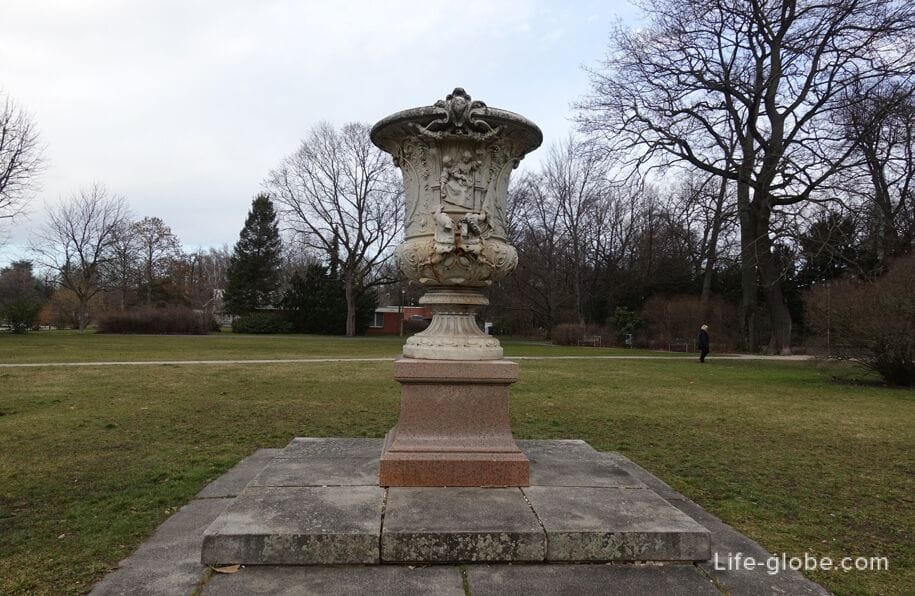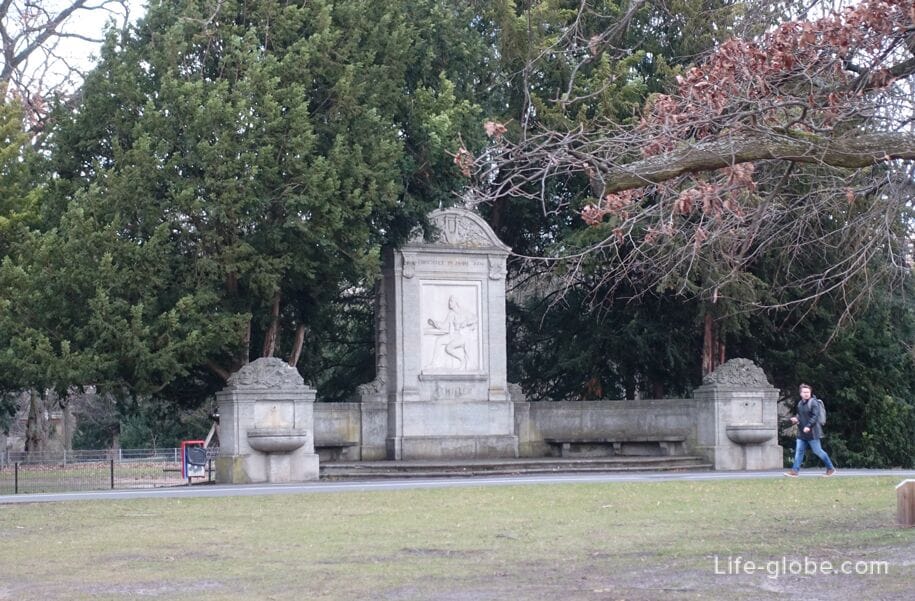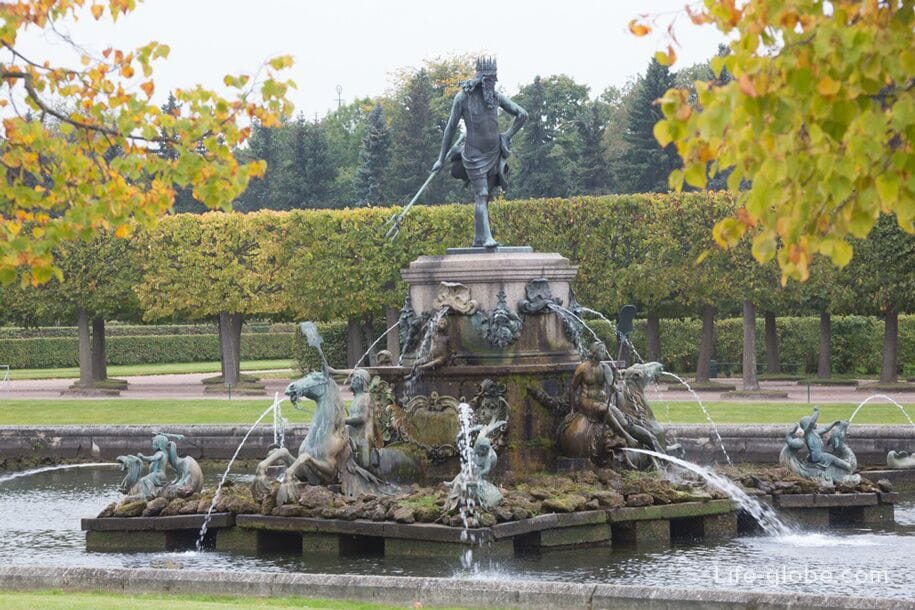
Nuremberg City Park (Stadtpark, German name: Stadtpark Nürnberg) is a green area in the center of Nuremberg, which is located near the historical center of the city (Old Town).
The most famous attraction of the park is the fountain of Neptune, which has an interesting history, and the original of which is now located in Russia - the city of St. Petersburg.

The park was laid out in 1759, and since 1856 its redevelopment into an English landscape park was carried out at the expense of the German businessman and politician Georg Zacharias Platner (Georg Zacharias Platner). A small artificial lake was created in the center of the green zone, which from July 13 to July 16, 1861 became the venue for the 1st German Singing Festival. In memory of this event, a marble vase from 1891 was installed in the park, which can still be seen in the park.
The city park was largely destroyed during World War II. In 1958, under the leadership of Director of Horticulture Kurt Ales, a redesign of the park was developed and implemented. The city park was given a new, modern look.
Today, the park is an urban public green space with about 19 hectares of territory, on which there are alleys for walking, places for recreation, flower beds, several monuments, vases, a restaurant, a lake and a fountain of Neptune.




The Neptune Fountain (Neptunbrunnen, German name: Neptunbrunnen) is the main decoration of the Nuremberg City Park and the largest Baroque fountain north of the Alps.
The fountain was created by Nuremberg master sculptors X. Ritter, G. Schweiger and I. Eisler in 1660-1668 as a memorial to peace after the end of the Thirty Years' War.
The sculpture called Neptunbrunnen (Neptunbrunnen) was first installed on the central market square of Nuremberg (Hauptmarkt / Hauptmarkt), but there was not enough water for the fountain to function in local rivers, the fountain was dismantled and put in a barn. In 1797, the city sold the fountain of Neptune to the Russian Emperor Paul I, who sent it to the city of St. Petersburg and installed it in the summer imperial residence in Peterhof. The fountain was slightly modified to fit the style of classicism and today it can be seen in The Upper Garden of the Grand Peterhof Palace in Peterhof (St. Petersburg).
At the end of the 19th century, attempts were made by the German side to buy the fountain back, but the refusal was received from Emperor Alexander III, however, as a gesture of reconciliation, it was allowed to make plaster casts of the original.
A copy of the lost fountain of Neptune was created in 1896-1902.
On October 22, 1902, the Neptune Fountain was reopened in the Nuremberg Market Square. In 1934, the National Socialists removed the Neptune Fountain from the square, because they considered it a "Jewish fountain" and it interfered with processions and rallies on the square.
Since 1962, the Fountain of Neptune has been located in the Nuremberg City Park and today this Baroque masterpiece still adorns the Nuremberg Park.
The bronze figure of the god of the seas Neptune is the central composition of the fountain and is mounted on a high pedestal. Neptune is depicted with a crown on his head and a trident in his hand. The pedestal is surrounded by riders on hippocampus (sea winged horses) and angels on winged dragons and dolphins. The composition is located in the large bowl of the fountain.


Photo of the Neptune Fountain in Peterhof, St. Petersburg

Entrance to the Nuremberg City Park is free (free of charge).
Coordinates of the Nuremberg City Park: 49°27'54.0"N 11°05'33.0"E (49.465000, 11.092500).
All accommodation facilities in Nuremberg, including in the city center and more remotely from it, can be viewed and booked here